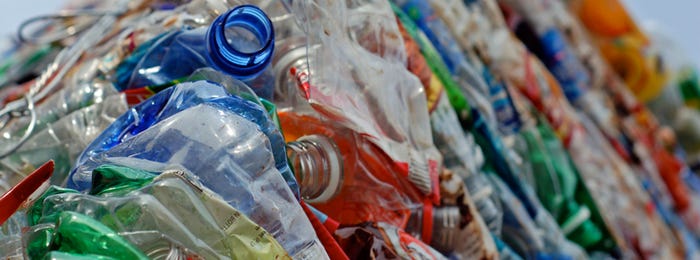Is plastics the most sustainable material for packaging?
Most of the time when there is talk about plastic packaging and sustainability, it centers on lightweighting, bioplastics, etc. However, a new study argues that your typical plastic packaging made from petrochemicals do just fine in enhancing a package's environmental performance.
March 3, 2014
Most of the time when there is talk about plastic packaging and sustainability, it centers on lightweighting, bioplastics, etc. However, a new study argues that your typical plastic packaging made from petrochemicals do just fine in enhancing a package's environmental performance.
The study, "Impact of Plastics Packaging on Life Cycle Energy Consumption & Greenhouse Gas Emissions in the United States and Canada," determined that six categories of plastic packaging help to significantly reduce energy use and greenhouse gas emissions compared to packaging alternatives made with other materials. The study aims to provide a transparent, detailed life cycle assessment that quantifies the energy and climate benefits of using various types of everyday plastic packaging compared to alternatives.
 Prepared by Franklin Associates for the American Chemistry Council (ACC) and the Canadian Plastics Industry Association, the study assessed the energy requirements and greenhouse gas emissions of six general categories of plastic packaging produced and sold in the U.S. and Canada. These include caps and closures, beverage containers, other rigid containers, carrier (or shopping) bags, stretch/shrink wrap, and other flexible packaging.
Prepared by Franklin Associates for the American Chemistry Council (ACC) and the Canadian Plastics Industry Association, the study assessed the energy requirements and greenhouse gas emissions of six general categories of plastic packaging produced and sold in the U.S. and Canada. These include caps and closures, beverage containers, other rigid containers, carrier (or shopping) bags, stretch/shrink wrap, and other flexible packaging.
"We all know that plastic packaging plays a critical role in protecting and preserving everything from groceries to high-end electronics. This study demonstrates that plastic packaging also makes a significant contribution to sustainability by dramatically reducing energy use and lowering greenhouse gas emissions," said Steve Russell, VP of ACC's plastics division, in a news release.
Study authors used life cycle assessment (LCA) methodology to compare current amounts of various plastic packaging products to packaging made with alternative materials. So this is where it gets really interesting.
The assessment found that for the baseline year 2010, replacing all plastic packaging with non-plastic alternatives for these six types of packaging in the U.S. would:
Require 4.5 times as much packaging material by weight, increasing the amount of packaging used in the U.S. by nearly 55 million tons (110 billion pounds);
Increase energy use by 80 percent - equivalent to the energy from 91 oil supertankers; and
Result in 130 percent more global warming potential - equivalent to adding 15.7 million more cars to our roads.
"The 'Four Rs' - reduce, reuse, recycle, and recover - are so important for understanding, measuring and improving sustainability," continued Russell. "This study shows the enormous benefits that reducing or optimizing a package design at the beginning of the process can have throughout its entire life cycle."
"In addition, America's plastics makers are working to enhance plastics' environmental performance after use by increasing recycling and recovery while supporting efforts to prevent litter," Russell said.
The study contains more than 50 tables and 16 charts and illustrations, and it examines each of the major life cycle stages for packaging: raw material production, packaging fabrication, distribution transport, postconsumer disposal and recycling.
The full report is available here.
The ACC says that more than five billion pounds of plastic was recycled in the U.S. in 2012. And most Americans have the ability to recycle plastics after use (such as residential curbside collection or a community drop-off center), which is great. But still it's widely known that in most areas, the demand for recycled plastics exceeds the available supply. I've had many people, from a sustainability leader with Starbucks to the CEO of recycler CarbonLite, tell me that. Cities and towns that lack the infrastructure and initiative to accept the material, are just continuing the 'chicken and egg' scenario with plastics and recycling.
About the Author(s)
You May Also Like


